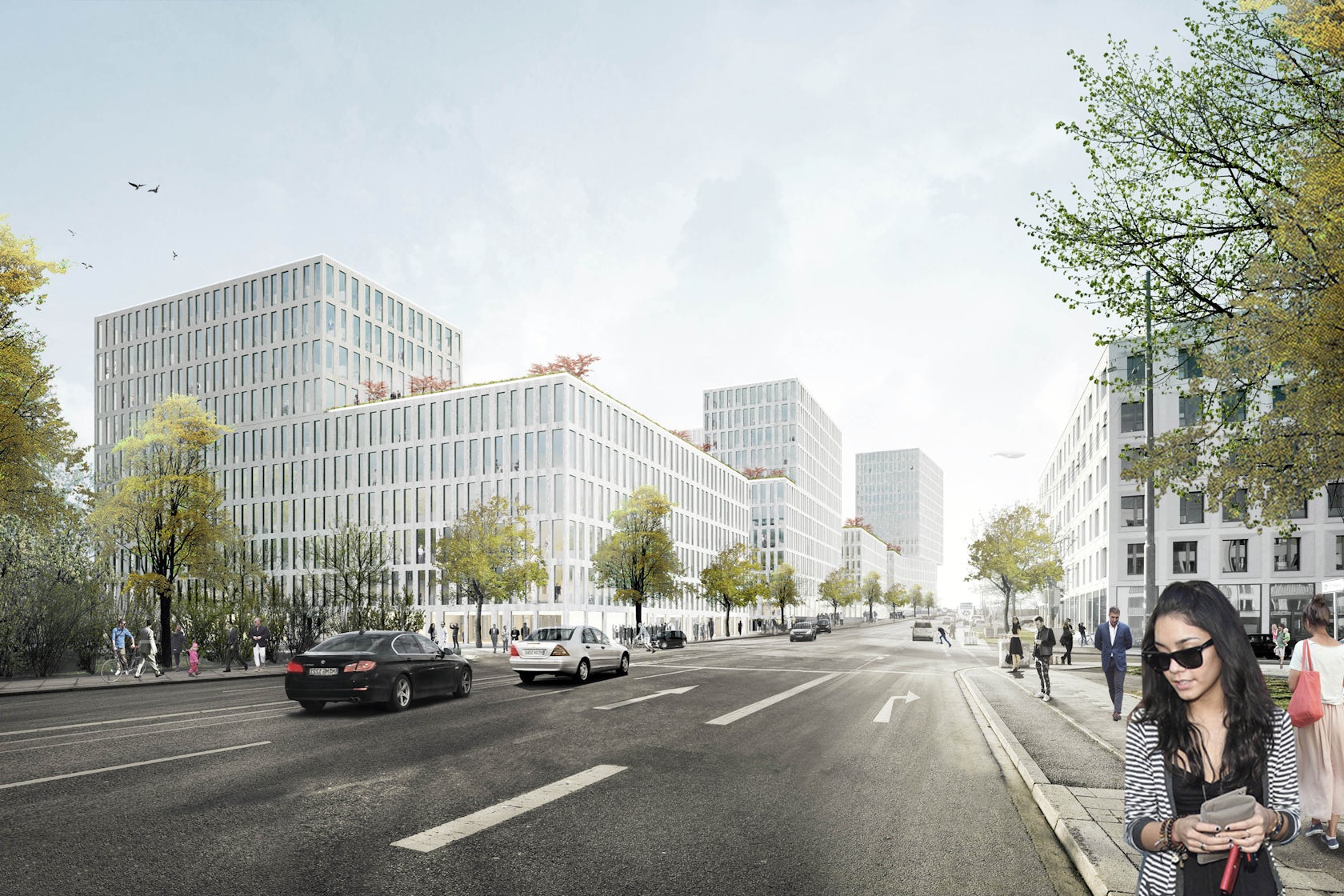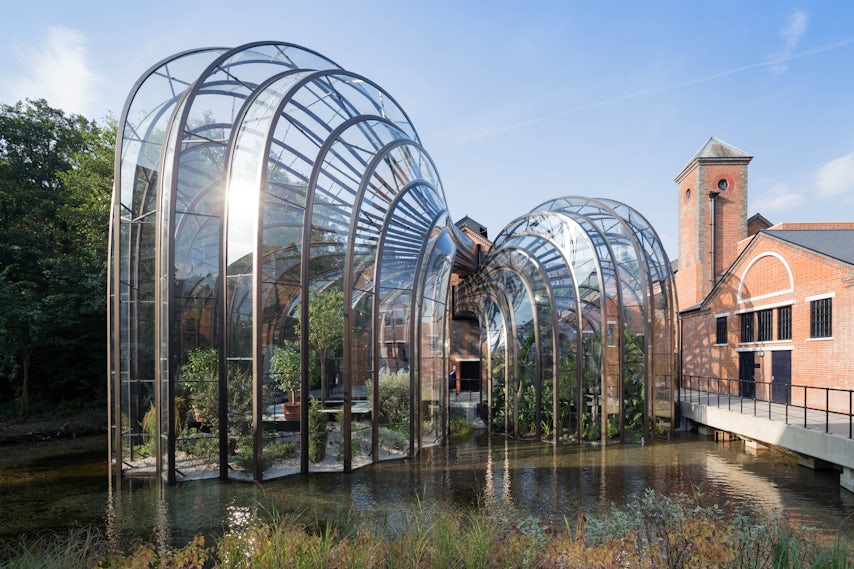Wiel Arets Architects has been selected to design the “Am Hirschgarten” mixed-use campus on the western of edge of Munich. In order to meet the requirements of economy, sustainability, and flexibility, the firm has developed a series of four buildings, towers rising from the 6- to 7-story plinths, the tallest coming in at 17 stories total. The horseshoe-shaped buildings are oriented as pairs of brackets around the semi-enclosed courtyard spaces: The main entrance to each building faces the street to engage public space, where a one-story gated pergola (which effectively links the ends of the horseshoe) serves as a permeable barrier to the courtyard for security purposes.


“What I’m interested in is the idea that buildings are developed in a hybrid manner, and that their programmatic conditions are able to shift over time,” said Arets in a statement via email. “The project at Am Hirschgarten in Munich anticipates such future programmatic changes.”
Each of the buildings is 18m deep, allowing for open-plan offices or subdivided spaces alongside the designated retail and hotel areas — the brief also called for spaces that could potentially be converted to residences — while the compact cores and strategic glazing afford both versatility and energy-efficiency. Two of Am Hirschgarten’s underground parking garages are connected for accessibility and shared utilities, and the campus is just steps away from the Hirschgarten station on the light-rail, and but a few minutes’ walk to Munich’s tram lines — but Arets envisions a rather more freeflowing future: “Floating in the sky of the project’s renderings are zeppelins; they are representative of a certain kind of new luxury, of idle time, of slowness, and of leisure.”


Meanwhile, the façades will feature concrete panels with a subtle texture that mirrors the tactile qualities of its immediate environment. Since half of the façade is glazed, an algorithm mediates solar gain (though users can override as needed). The floor-to-ceiling windows offer either views of Munich or of the semi-private courtyards, not only at ground-level, within the horseshoe, but on the fully planted green roofs of the plinths as well.
“Hybrid metropolises of the twenty-first century will be automated, noiseless and connected,” concludes Arets. “This project anticipates those realities.”


All images courtesy of Wiel Arets Architects




